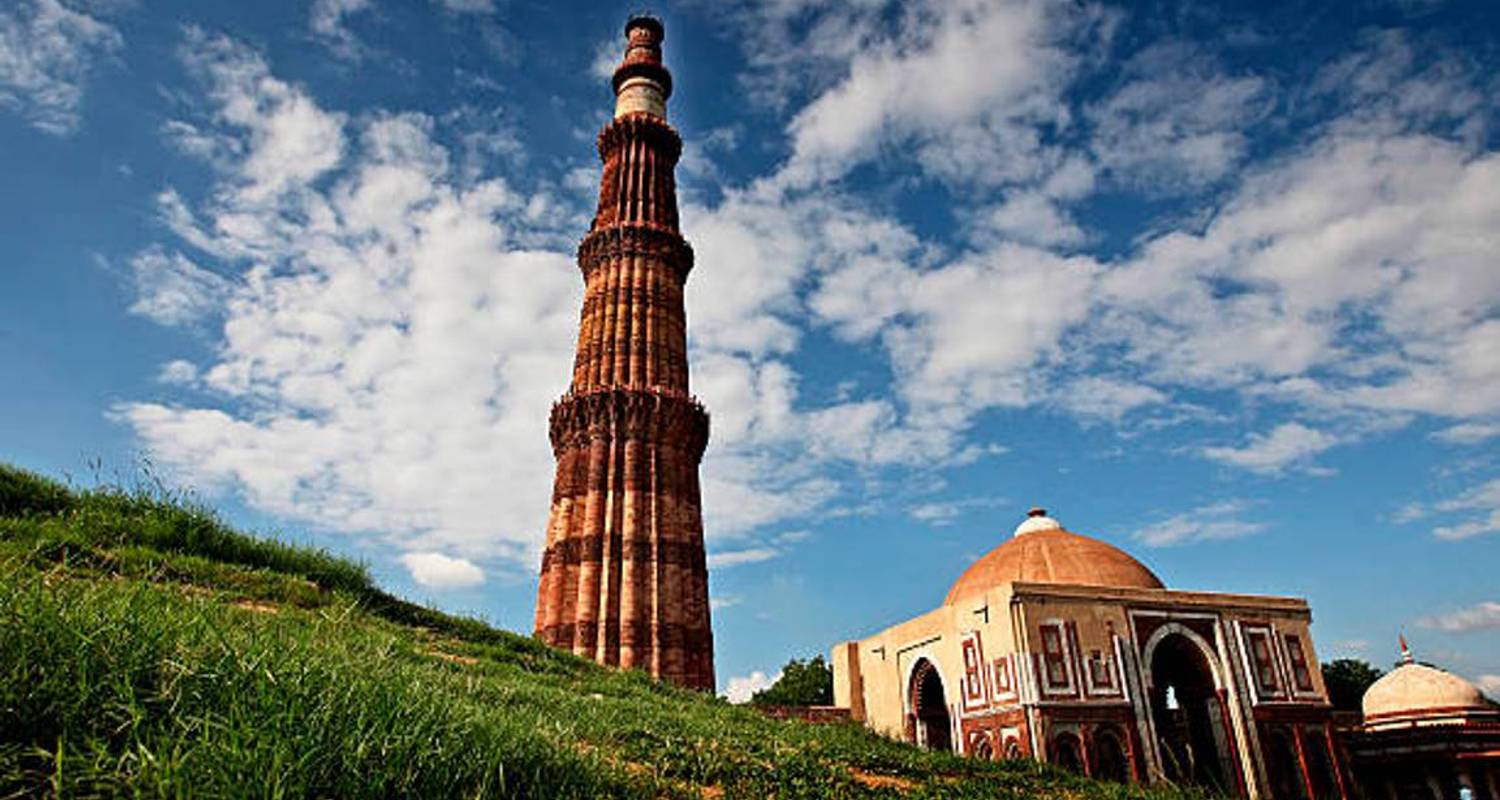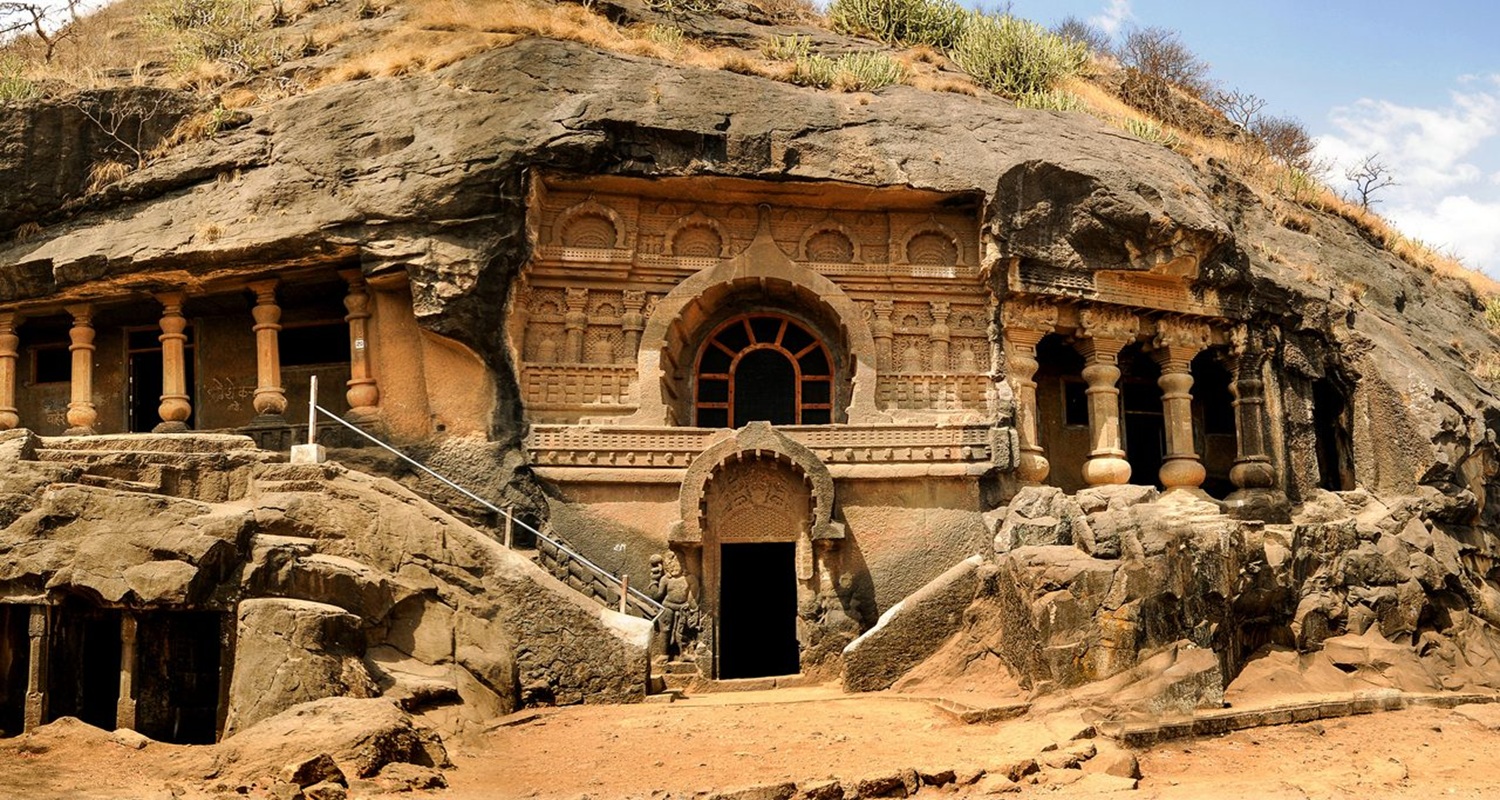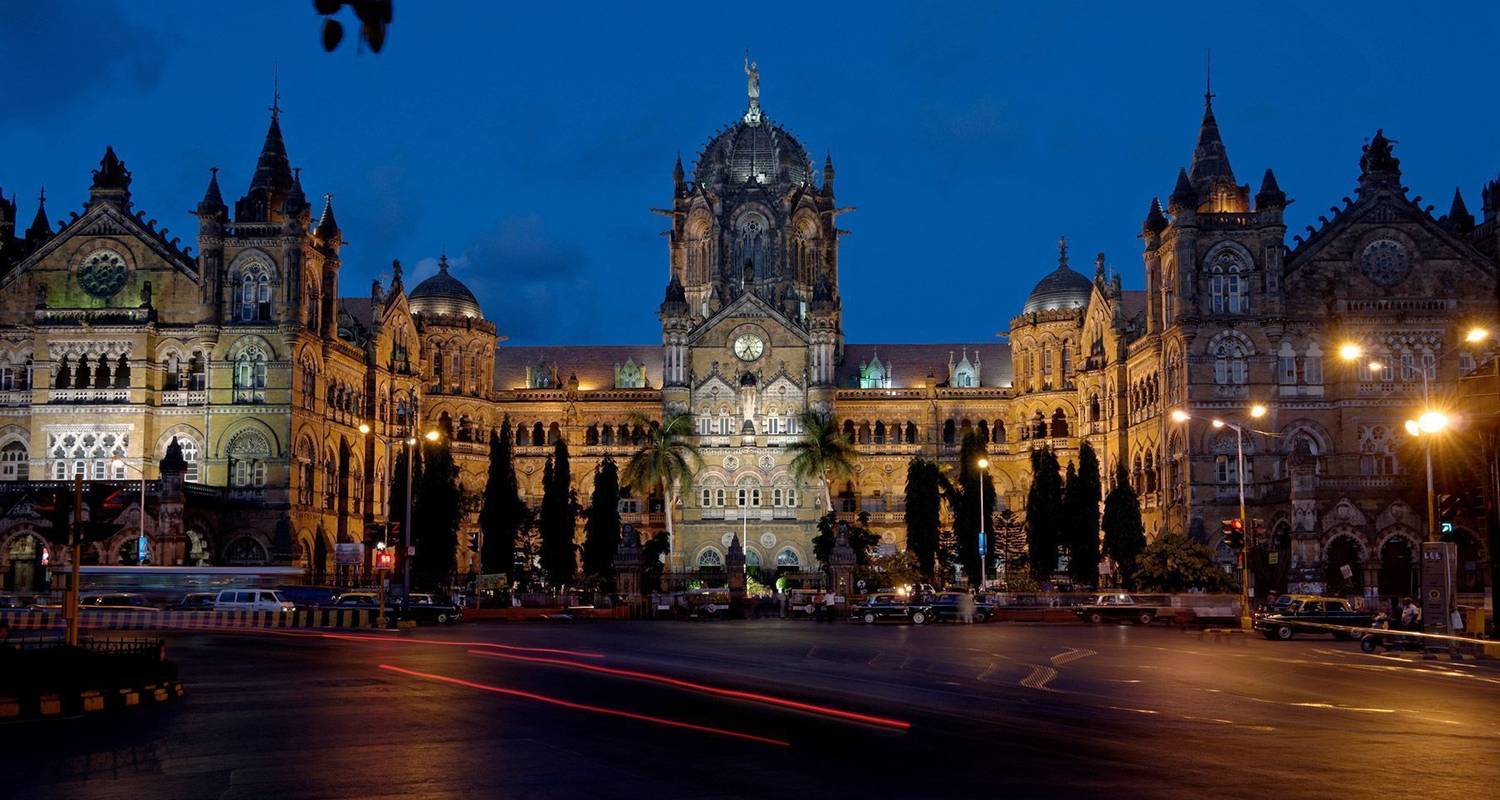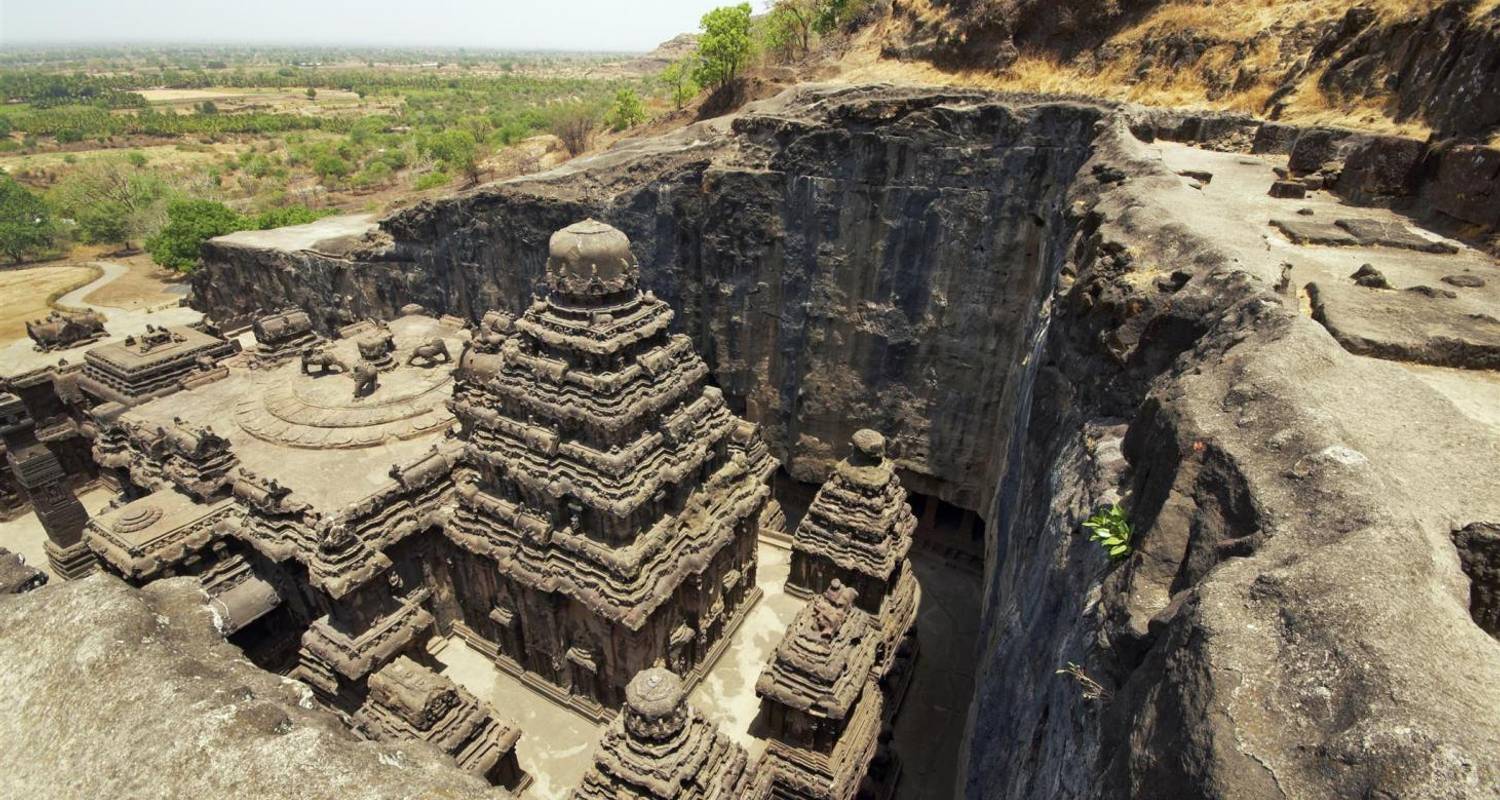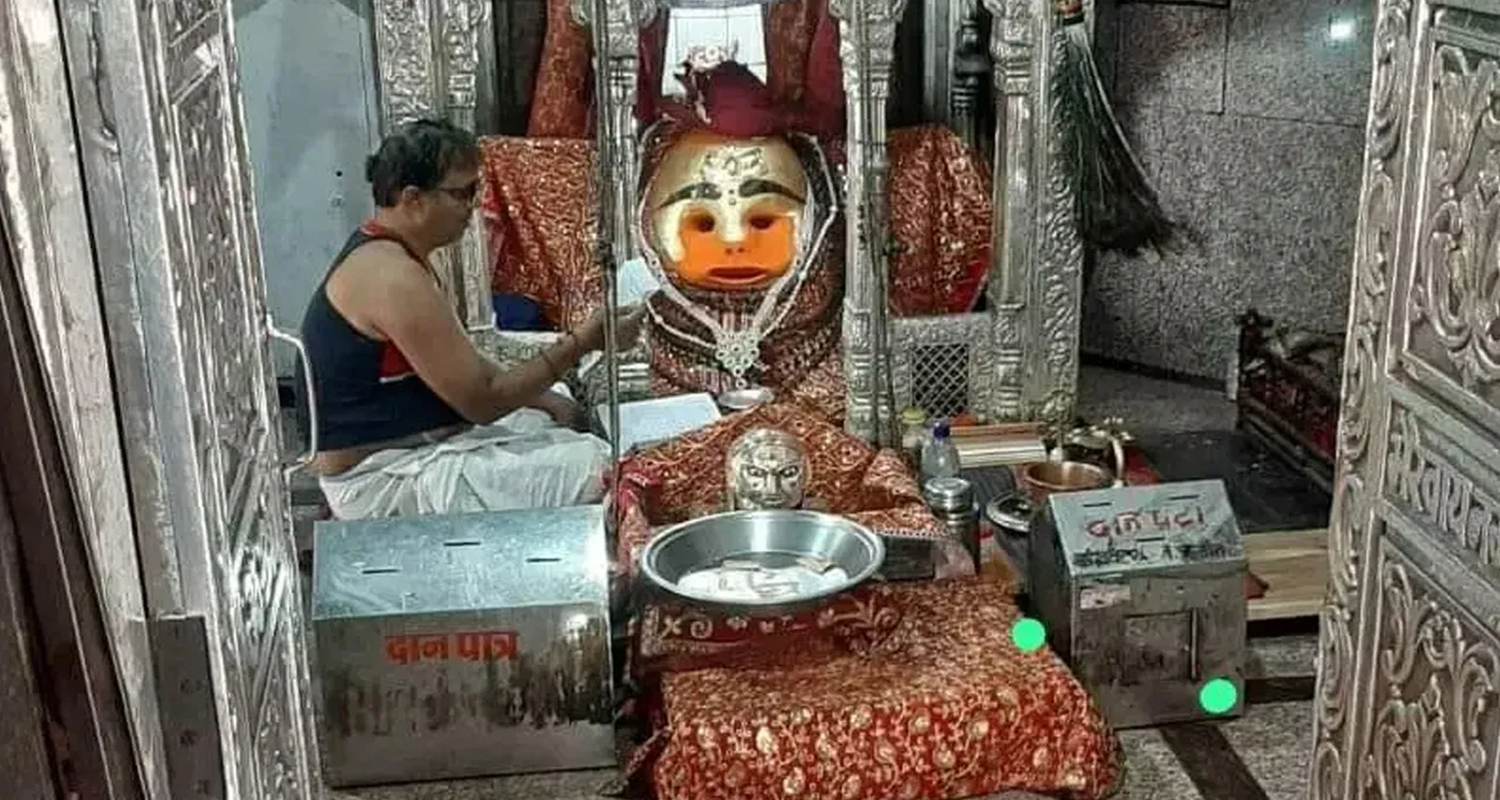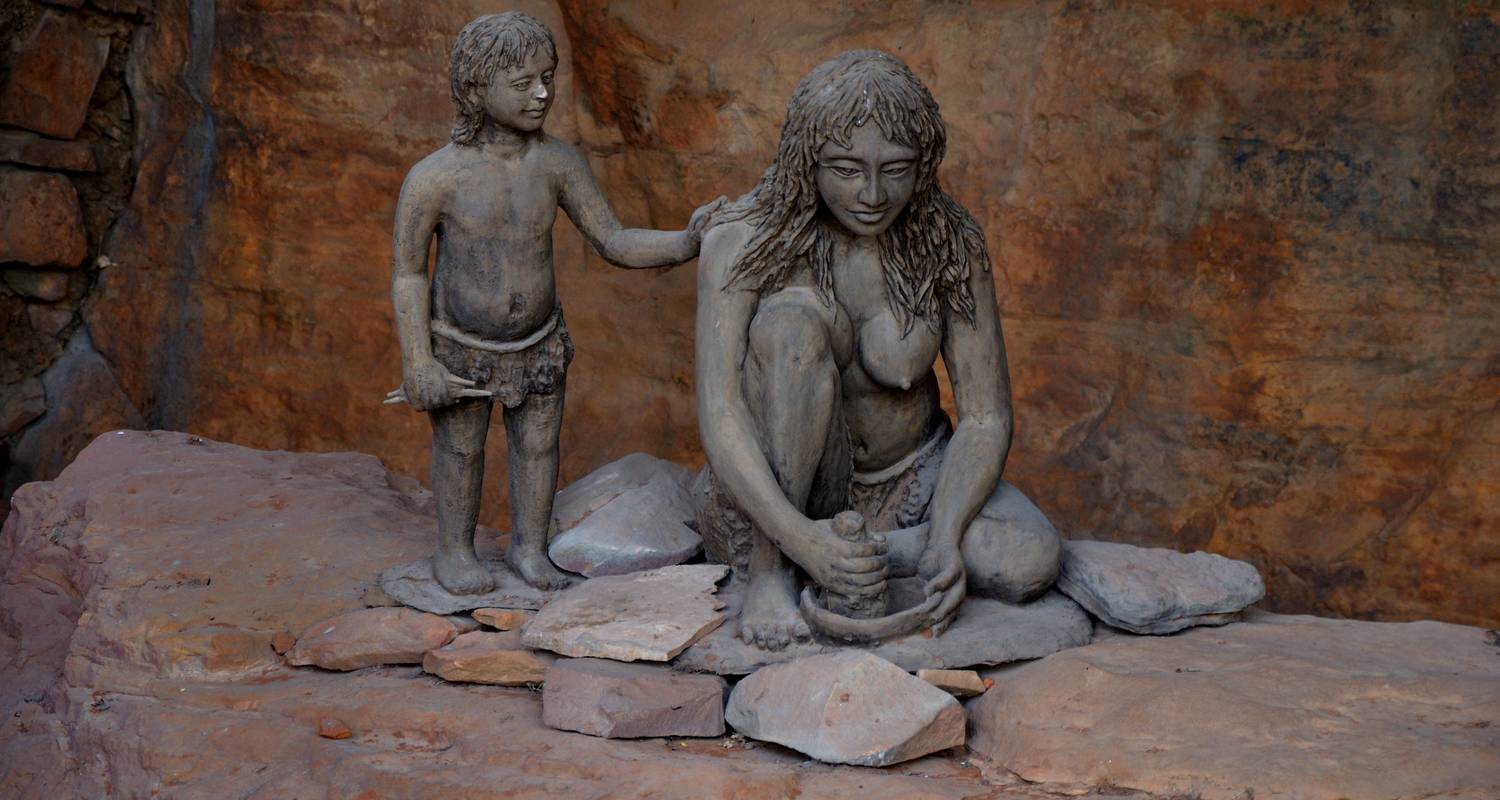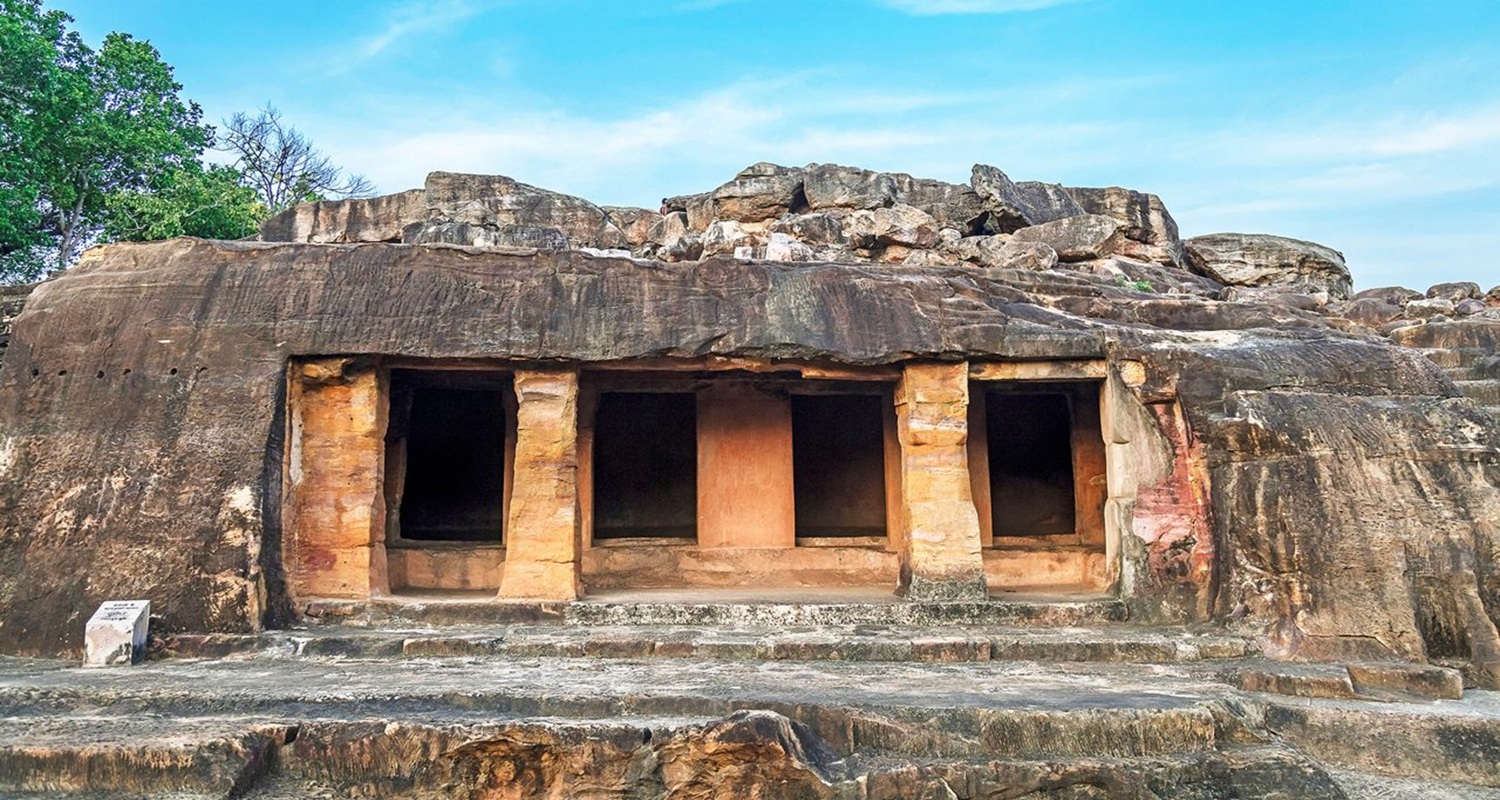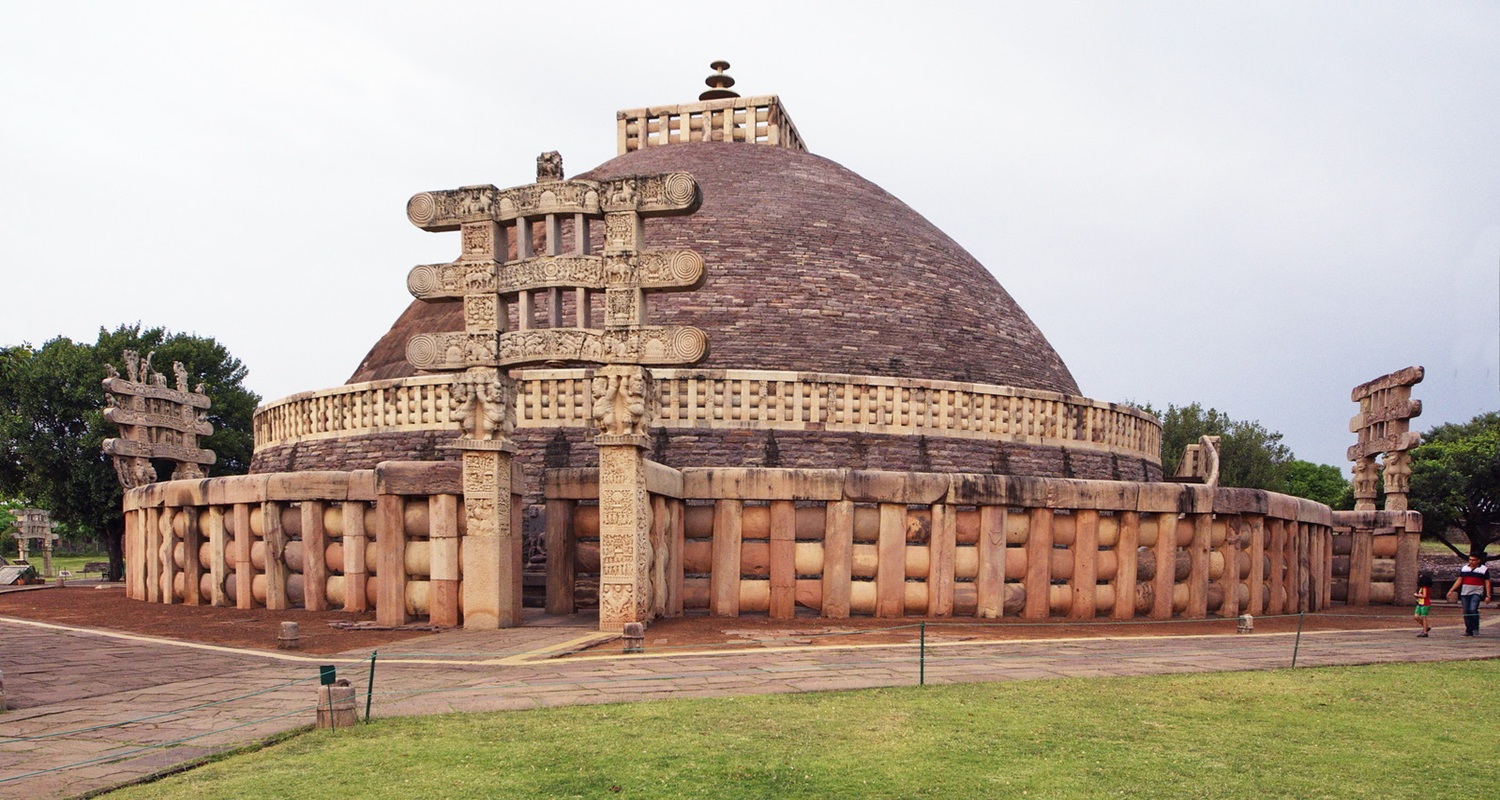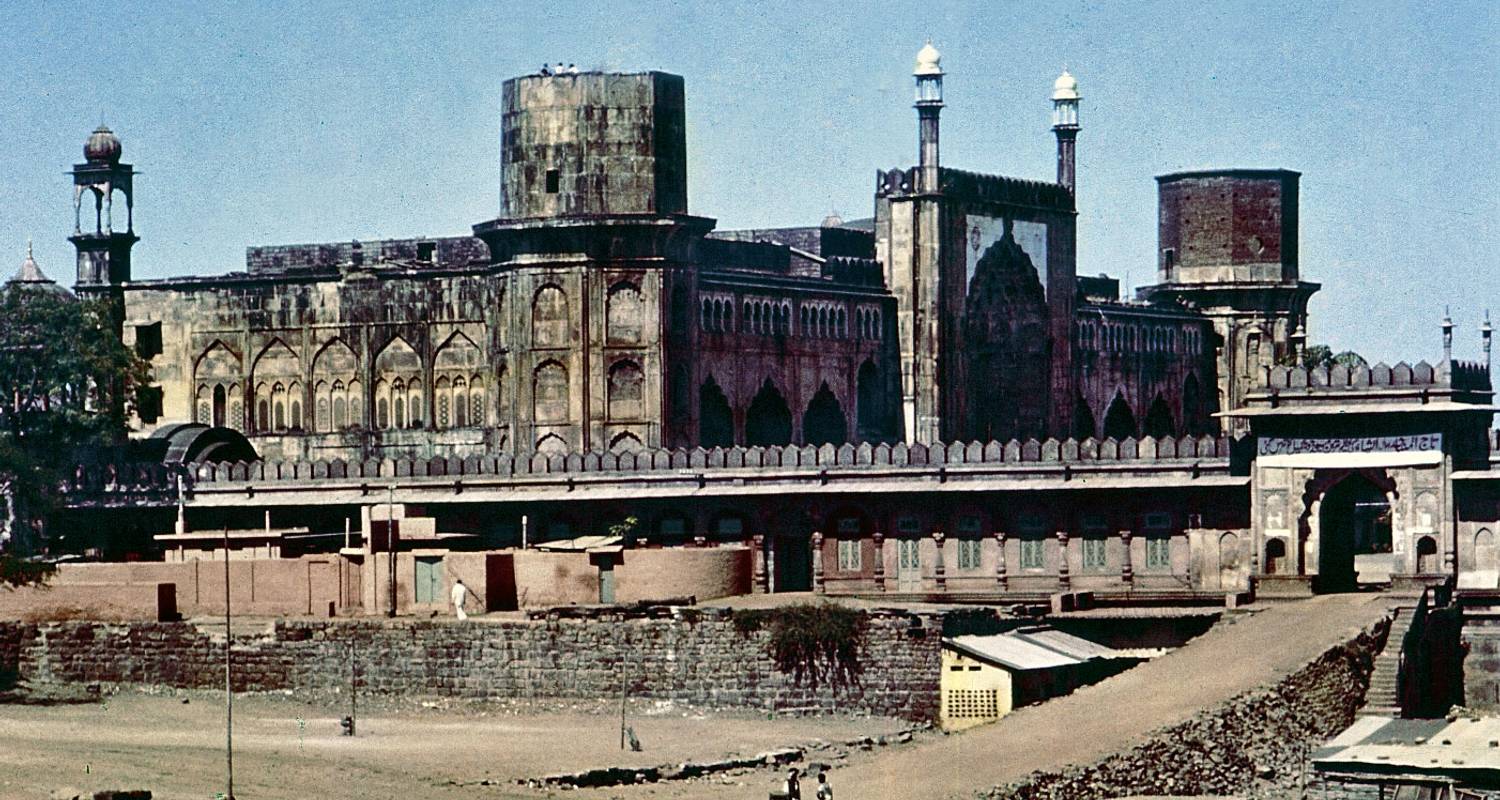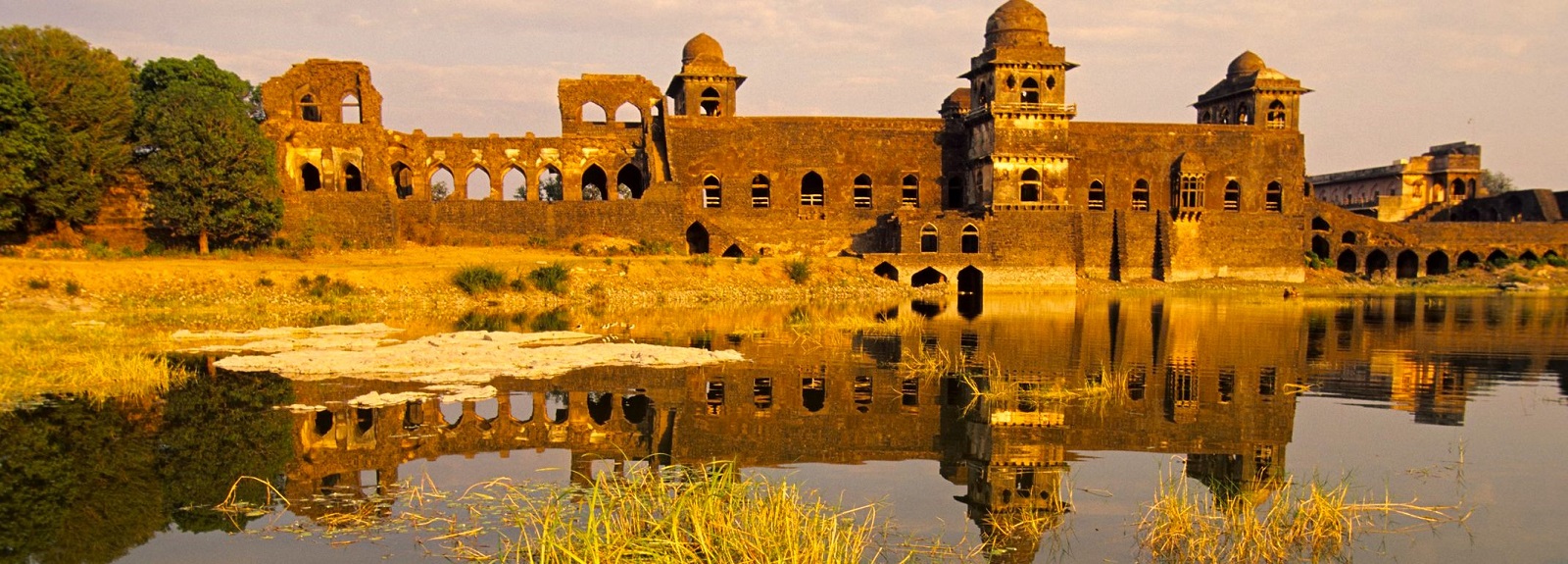
Madhya Pradesh
Madhya Pradesh & Maharashtra
Included
INR 96400 Per Person
3-4-5 stars
Travel Duration
11 Days / 10 Nights
Included in the trip
Individual departures
Round Year
The tour takes you to the magnificent state of Madhya Pradesh. And Maharashta. Here you will find numerous spectacular places with stunning architecture and history. After a brief introductory tour of Delhi, you will visit Gwalior, which is famous for its 8th century medieval fort. You then move on to, Orchha and Mandu, which are beautiful historic towns, with majestic forts and grand temples. On this tour, you will also visit sanchi, famous for its great Buddhist stupa, which preserves relics of Buddha and his followers. Get Enchanted with the majestic Mandu Fort and Mahakal Temple. You will also be visiting the Caves and rock cut temples of Ajanta and Ellora whose timeless beauty will make you feel speechless. Your tour ends in the Financial capital of India, Mumbai. Famous for its busy life, Bollywood cinema and some colonial Architecture of British era. Leave all your worries at home as MTA Destinations, your specialist destination management company in India, will take care of all your problems so you can enjoy a relaxed hassle free trip.
Stages Of Tour
Day 1
ARRIVAL IN DELHI & SIGHT SEEING
Welcome to DELHI, The Capital of India. Your flight would land at INDIRA GANDHI INTERNATIONAL AIRPORT. After landing kindly head towards the immigration department and get your passport stamped. Immigration Department would stamp the Visa on your Passport. After the Immigration and Custom check Kindly Take an Exit from the Airport from EXIT GATE NO 4.
MY TOUR ADVISOR’S Representative would be waiting for you to welcome you outside the Gate No 4.
After the Meet Proceed towards the Visit of the CAPITAL of INDIA. You would be Covering following Monuments and activities.
1. VISIT OF OLD DELHI & JAMA MASJID
First you would be taken to the Old Part of the city, also Called as the Old City. It was once built by Emperor Shahjahan and was named Shahjahanabad. You will be visiting the JAMA MASID, the biggest Friday Mosque of India, which can host up to 20,000 Worshippers.
After the visit you can enjoy a Ride on Pedal Rickshaw through the narrow alleys of Famous Chandni Chowk Market which is famous for textiles, street food, spices, and many other items.
2. VISIT OF RAJ GHAT
After the visit of Jama Masjid Proceed Towards the Visit of RAJ GHAT which is the cremation ground of father of the Nation MAHATMA GANDHI.
3. PANORAMIC TOUR OF LUTYENS DELHI
After Paying Homage to the tomb of Mahatma Gandhi, Explore the Lutyens Delhi, Drive through India Gate, Indian Parliament and Government House.
4. VISIT OF QUTUB MINAR.
In the End Proceed towards the visit of Qutub Minar. It was built by First Muslim Ruler Qutbuddin aibak. After conquering the the last Hindu dynasty of Delhi. The Minar is a conical structure with a height of 72 metres. Once it was the most dominating structure of delhi.
After the visit you shall be transferred to your Hotels for checkin. Overnight Stay in DELHI.
Day 2
DELHI – BHOPAL (Flight | 1 Hour)
BHOPAL - Bhopal, the capital city of Madhya Pradesh, is known for its unique blend of historical charm and modern development. Often referred to as the "City of Lakes," it features beautiful natural and artificial lakes like the Upper Lake and Lower Lake. Bhopal has a rich history, especially under the rule of the Begums, who significantly influenced its architecture and culture. The city is home to landmarks like Taj-ul-Masajid, Bharat Bhavan, and the State Museum. It also has a growing industrial and educational presence. Bhopal is culturally vibrant, with a strong heritage in crafts, cuisine, and classical music.
After Breakfast Transfer to Delhi airport to catch the flight for BHOPAL, On Arrival Meet with MY TOUR ADVISOR’S Representative and transfer to Hotel. In the Evening visit the TAJ UL MASJID Mosque.
1. TAJ UL MASJID
The Taj-ul-Masajid, meaning "Crown of Mosques," is a monumental mosque located in Bhopal, Madhya Pradesh, and stands as the largest mosque in India. Its construction began in the late 19th century under the patronage of Nawab Shah Jahan Begum and was later continued by her daughter, Sultan Jahan Begum. The mosque's construction faced several interruptions and was eventually completed in the mid-20th century.
Architecturally, the Taj-ul-Masajid is a splendid example of Indo-Islamic and Mughal design. It features a pink façade, two towering minarets, and three large white domes. The mosque's main prayer hall is adorned with ornate pillars and marble flooring, reminiscent of the grand mosques in Delhi and Lahore. A notable feature is the zenana, or women's gallery, which was uncommon in mosques of that era
After the visit return to the Hotel for overnight stay.
Day 3
BHOPAL – SANCHI – UDAIGIRI – BHOPAL
After the Breakfast, start your excursion to visit the Sanchi Stupa and Udaigiri caves. Sanchi is Located around 50 kms from Bhopal and is famous for buddhist Supas. Arrive at Sanchi and visit the Sanchi Stupas.
1. SANCHI STUPAS
Sanchi, located in the Raisen district of Madhya Pradesh, is home to one of the oldest and most important Buddhist monuments in India—the Great Stupa of Sanchi. This UNESCO World Heritage Site is a treasure trove of ancient Indian art, architecture, and spirituality. The site is most famous for its Great Stupa (Stupa No. 1), originally commissioned by Emperor Ashoka in the 3rd century BCE after he embraced Buddhism. It was later expanded in the following centuries.
The Great Stupa stands at 54 feet high and 120 feet in diameter and is a solid hemispherical dome built over the relics of the Buddha. It is topped by a harmika (a square railing) and a central pillar supporting a triple umbrella structure (chattra), symbolizing the Three Jewels of Buddhism—Buddha, Dharma, and Sangha.
Surrounding the stupa are four elaborately carved toranas (gateways)—facing the four cardinal directions. These gateways, added during the Shunga period (2nd–1st century BCE), are masterpieces of Indian sculpture. They depict scenes from the Jataka tales (stories of the Buddha’s previous lives), as well as events from the Buddha’s life, all rendered in symbolic art without portraying the Buddha directly—he is represented through symbols like the Bodhi tree, footprints, or an empty throne.
Besides the Great Stupa, the Sanchi complex includes several other smaller stupas, temples, monastic ruins, and pillars, reflecting various phases of Buddhist architectural development—from Mauryan to Gupta periods. The Ashokan Pillar, near the southern gateway, is another important structure known for its finely polished sandstone and the iconic lion capital, similar to the one at Sarnath.
Sanchi was not a site visited by the Buddha himself but became a vital center for Buddhist learning and pilgrimage for centuries. It showcases the transition of Buddhism from Hinayana (Theravada) to Mahayana traditions, evident from the evolution in art and construction styles.
After the visit move towards Udaigiri Caves.
2. UDAIGIRI CAVES.
The Udayagiri Caves, located about 13 km northeast of Sanchi and near Vidisha in Madhya Pradesh, are a remarkable complex of ancient rock-cut caves that date back to the early 5th century CE, during the reign of the Gupta dynasty. These caves are among the oldest surviving Hindu cave temples in India and hold immense historical, religious, and artistic significance.
There are 20 caves in total, carved into a sandstone hill, and they reflect a blend of Hindu, Jain, and Buddhist traditions. Most of the caves are Hindu shrines dedicated to Shiva and Vishnu, featuring intricately carved panels, inscriptions, and sanctums. One of the most celebrated sculptures here is the colossal Varaha panel, depicting Lord Vishnu in his boar incarnation lifting the Earth goddess (Bhudevi) from the cosmic ocean—an iconic representation of Gupta-era art.
The Udayagiri Caves also contain one of the earliest known depictions of the Hindu god Shiva as Ardhanarishvara, as well as inscriptions that provide valuable insights into the Gupta Empire, including references to King Chandragupta II and his court.
Surrounded by natural beauty and ancient ruins, Udayagiri offers visitors a glimpse into India’s early temple architecture and religious iconography. Its historical importance, combined with artistic excellence, makes it a fascinating destination for history lovers, art enthusiasts, and spiritual seekers.
After the visit return back to the Bhopal, Overnight Stay in Bhopal.
Day 4
ORCHHA - BHOPAL (352 Km - 6 Hrs Approx.)
BHOPAL - BHIMBETKA - BHOJPUR – BHOPAL
After the Breakfast, Head out for a full day excursion to Bhimbetka and bhojpur. Bhimbetka is a prehistoric site, where many caves have been found with the paintings and grafiities made by early humans. Some of them dates back to 12000 years ago.
1. BHIMBETKA CAVES
The Bhimbetka Caves, located about 45 kilometers south of Bhopal in Madhya Pradesh, are one of the most significant prehistoric archaeological sites in India. Recognized as a UNESCO World Heritage Site, the Bhimbetka Rock Shelters offer a fascinating glimpse into early human life, dating back to the Paleolithic, Mesolithic, and early historic periods.
Set within the Vindhyan Hills, the site comprises over 700 rock shelters, of which around 400 contain paintings, tools, and remains that showcase the evolution of human civilization over tens of thousands of years. These shelters were naturally formed and used by early humans for dwelling and community activities.
The most captivating aspect of Bhimbetka is its rock paintings, which are believed to be 30,000 years old or more. These paintings, done in natural pigments, depict scenes of hunting, dancing, animals, human figures, battle scenes, and rituals. They offer valuable insights into the daily life, beliefs, and artistic expression of prehistoric people. The colors—mainly red, white, green, and yellow—have surprisingly survived through millennia due to the dry climate and sheltered locations. Afterwards move towards Bhojpur to visit the Bhojpur Temple.
2. BHOJPUR TEMPLE
The Bhojeshwar Temple, located in Bhojpur, approximately 28 kilometers from Bhopal, Madhya Pradesh, is an extraordinary yet unfinished 11th-century Hindu temple dedicated to Lord Shiva. Commissioned by the renowned Paramara king Raja Bhoja, who also founded Bhopal, the temple stands as a testament to his architectural vision and devotion.
The temple's most striking feature is its colossal Shiva Lingam, carved from a single stone, measuring about 2.3 meters in height and 5.4 meters in circumference, making it one of the largest of its kind in India. The sanctum, or garbhagriha, is supported by four massive pillars, and the temple's design follows the Bhumija architectural style, characterized by its towering shikhara (spire) and intricate carvings.
Despite its grandeur, the temple remains incomplete. The reasons for this are still debated, with theories ranging from political upheavals to natural calamities. Interestingly, architectural plans and mason's marks are engraved on nearby rocks, providing valuable insights into 11th-century temple construction techniques.
After the Visit return Back to Bhopal for Overnight Stay.
Day 5
BHOPAL - UJJAIN – INDORE (250 Km | 5 Hours)
After breakfast, transfer to Indore, via Ujjain.
UJJAIN one of the oldest living cities in India, is located in the state of Madhya Pradesh, on the banks of the sacred Shipra River. Steeped in myth, history, and spiritual significance, Ujjain is one of the seven holy cities (Sapta Puri) of Hinduism and a prominent pilgrimage center. It is especially revered as the home of Mahakaleshwar Jyotirlinga, one of the 12 sacred shrines dedicated to Lord Shiva.
Ujjain was once a major center of learning and astronomy, flourishing under rulers like Chandragupta II and the famed scholar Varahamihira. The ancient name of the city was Avanti, and it is mentioned in several scriptures including the Mahabharata and Puranas. It was also one of the four cities to host the Kumbh Mela, a grand religious gathering held every 12 years. Arrive at Ujjain and visit the Mahakaleshwar Temple.
1. MAHAKALESHWAR TEMPLE
It is one of the most sacred and revered temples dedicated to Lord Shiva. It holds immense religious significance as one of the twelve Jyotirlingas in India—the most powerful manifestations of Shiva. According to legend, the Mahakaleshwar Jyotirlinga appeared to protect the city of Ujjain from a demon, and since then, the deity has been worshipped as the guardian and ruler of time (Mahakaal). The present-day structure was rebuilt in the 18th century by the Maratha ruler Ranoji Shinde, and later expanded by various dynasties.
2. KAL BHAIRAV TEMPLE
The Kal Bhairav Temple in Ujjain is one of the most mysterious and powerful shrines dedicated to Lord Kal Bhairav, a fierce manifestation of Lord Shiva.
Kal Bhairav is considered the guardian deity of Ujjain, and it is believed that no spiritual or religious activity in the city can begin without his permission.
The temple is particularly famous for a unique offering—liquor. Devotees bring bottles of alcohol as part of their worship, and it is ritually offered to the deity. This practice, though astonishing, is accepted as a centuries-old tradition and draws both believers and curious visitors.
After the visit proceed towards INDORE. On Arrival check-in to the Hotel. Overnight Stay in Indore.
Day 6
INDORE – MANDU (100 Km | 3 Hours)
After breakfast at the Hotel and departure for MANDU, On Arrival Visit of the Fort City with Its Palaces like Jahaz Mahal, Jama Masjid, Hoshang Shah Tomb & Others.
1. MANDU
Mandu, also known as Mandavgarh, is a historic town nestled in the Dhar district of Madhya Pradesh, India. Perched at an elevation of over 2,000 feet on the Vindhya Range, it overlooks the Malwa Plateau to the north and the Narmada Valley to the south. This strategic location endowed Mandu with natural defenses, making it a coveted site for various dynasties over the centuries. The town's history dates back to the 6th century when it was known as Mandapadurga. It flourished under the Paramara dynasty in the 10th and 11th centuries, serving as a significant military outpost.
In the 14th century, Dilawar Khan Ghuri, the governor of Malwa, declared independence from the Delhi Sultanate and established Mandu as the capital of the Malwa Sultanate. Under his son, Hoshang Shah, Mandu reached its zenith, becoming a hub of art, architecture, and culture.
Mandu is renowned for its impressive array of Indo-Islamic architecture, reflecting a blend of Afghan and Mughal influences. The Jahaz Mahal (Ship Palace), built between two artificial lakes, gives the illusion of a floating ship and served as a harem for Sultan Ghiyas-ud-din Khalji. The Hindola Mahal (Swinging Palace), with its sloping walls, was likely used as an audience hall. The Jami Masjid, inspired by the Great Mosque of Damascus, stands as a testament to the town's architectural grandeur. Nearby, the Hoshang Shah's Tomb, India's first marble mausoleum, is believed to have influenced the design of the Taj Mahal.
The romantic tale of Baz Bahadur and Rani Roopmati adds a layer of legend to Mandu's history. Baz Bahadur's palace and Roopmati's Pavilion, perched on a hill with views of the Narmada River, are enduring symbols of their love story. The Rewa Kund, a reservoir built to supply water to Roopmati's Pavilion, showcases the engineering prowess of the time.
After the visit check-in to the Hotel. Overnight Stay in MANDU.
Day 7
MANDU – MAHESHWAR – JALGAON (300 Km | 6 Hours Excluding Visit)
After Breakfast Transfer to Maheshwar. On arrival visit of the MAHESHWAR
Maheshwar, located on the banks of the sacred Narmada River in Madhya Pradesh, is a serene and historically rich town known for its spiritual significance, remarkable architecture, and handloom heritage. Just about 90 km from Mandu, Maheshwar was once the capital of the Holkar dynasty and rose to prominence under the rule of Queen Ahilyabai Holkar in the 18th century.
Ahilyabai transformed Maheshwar into a center of Maratha culture and governance, commissioning temples, ghats, and public works that still define the town's character today. The grand Ahilya Fort, overlooking the river, houses a heritage hotel and offers sweeping views of the Narmada, as well as access to intricately carved temples and cenotaphs built in her memory. The Ahilyeshwar Temple, built by the queen herself, is a fine example of Maratha temple architecture.
Maheshwar is also renowned for its handwoven Maheshwari sarees, known for their elegance, lightness, and unique borders. Local weavers continue to keep this centuries-old craft alive, making it a hub for traditional textile lovers.
The ghats of Maheshwar are tranquil and scenic, dotted with temples and stone steps where pilgrims perform rituals and evening aartis. The blend of spiritual calm, royal legacy, and artisanal tradition makes Maheshwar a deeply enriching destination.
After the visit Proceed towards Jalgaon, On Arrival in Jalgaon, Check-in to the Hotel for Overnight Stay.
Day 8
JALGAON – AJANTA – AURANGABAD (160 KM | 1+ 3 Hours)
After Breakfast at hotel. Departure for Aurangabad, via stop at the Buddhist Site of Ajanta, protected by UNESCO. They are believed to date back to a period between 200 BC and 650 AD.
Arrive at AJANTA and visit of the Caves.
1. AJANTA CAVES
The Ajanta Caves, located in Maharashtra, are a UNESCO World Heritage Site and one of the most extraordinary achievements of ancient Indian art and architecture. Dating back to the 2nd century BCE to 6th century CE, these 30 rock-cut caves were carved into a horseshoe-shaped cliff overlooking the Waghora River. They served as monasteries and prayer halls for Buddhist monks, reflecting both Hinayana and Mahayana traditions.
Ajanta is world-famous for its exquisite murals and frescoes, which depict scenes from the Jataka tales, the life of Buddha, and everyday life from ancient India. The paintings display remarkable grace, depth, and expression, using natural pigments and an early form of tempera technique.
The caves also feature intricately carved pillars, sculptures, and stupas that highlight the spiritual devotion and artistic excellence of early Indian craftsmen. Set amidst a lush forested valley, Ajanta offers a mesmerizing blend of art, history, and serenity.
After the visit transfer to AURANGABAD. On Arrival in Aurangabad, Check-in & Overnight in Aurangabad.
Day 9
AURANGABAD – ELLORA – NASHIK (200 KM | 5 Hours)
After breakfast transfer to Ellora. It is famous for Ellora rock cut temple dedicated to shiva.
1. ELLORA
The Ellora Caves are among the most magnificent rock-cut temple complexes in the world and a UNESCO World Heritage Site. Carved between the 6th and 10th centuries CE, Ellora features 34 caves that represent three major Indian religions, Buddhism, Hinduism, and Jainism - coexisting in artistic harmony. The caves are grouped by religion: the Buddhist caves (1–12), include monasteries and chapels with detailed carvings of the Buddha and bodhisattvas; the Hindu caves (13–29), created during the Rashtrakuta dynasty, showcase grand temples dedicated to Shiva, Vishnu, and others; and the Jain caves (30–34), built later, reflect the simplicity and intricate symbolism of Jain philosophy.
The highlight of Ellora is the awe-inspiring Kailasa Temple (Cave 16) A monolithic marvel carved from a single rock, dedicated to Lord Shiva. It is considered a pinnacle of Indian rock-cut architecture for its size, symmetry, and intricate carvings. Ellora stands as a remarkable symbol of India’s spiritual tolerance, architectural brilliance, and cultural diversity.
After the Visit proceed towards Nashik on the way visit the caves of Pandavleni.
2. PANDAVLENI
The Pandavleni Caves, also known as the Nasik Caves or Trirashmi Leni, are a remarkable group of 24 ancient rock-cut caves situated on the Trirashmi Hills, approximately 8 kilometers south of Nashik, Maharashtra. Carved between the 1st century BCE and the 3rd century CE, these caves served as monasteries (viharas) and prayer halls (chaityas) for Buddhist monks, reflecting the Hinayana tradition of Buddhism. The caves are renowned for their architectural and artistic significance. Most are viharas, featuring cells for monks and communal areas, while Cave 18 stands out as a chaitya with a prominent stupa.
After the visit proceed towards the City of NASHIK. On Arrival check-in to the Hotel, Overnight Stay In Hotel.
Day 10
NASHIK – TRIMBAK – MUMBAI (200 KM | 5 Hours)
After breakfast transfer to Mumbai, on the way visit the Trimbakeshwara Temple, one of the most sacred temples in all of India as it is one of the twelve most important shrines of Lord Shiva.
1. TRIAMBAKESHWARA TEMPLE
The Trimbakeshwar Shiva Temple, located in the town of Trimbak near Nashik, Maharashtra, is one of the twelve sacred Jyotirlingas of Lord Shiva. Situated at the foothills of the Brahmagiri Hills, this temple is also the origin point of the holy Godavari River, making it a significant pilgrimage site for Hindus.
The temple's architecture is a fine example of the Hemadpanthi style, constructed using black basalt stone. Commissioned in the 18th century by Peshwa Balaji Baji Rao, the temple features intricate carvings and a majestic spire. A unique aspect of this temple is the three-faced lingam, representing the trinity of Brahma, Vishnu, and Shiva, which is adorned with a jeweled crown believed to date back to the era of the Pandavas.
After the visit proceed towards Mumbai. On arrival in Mumbai check-in to the Hotel. Overnight in Mumbai.
Day 11
MUMBAI | DEPARTURE
After Breakfast checkout from Hotel and Start the Tour of the City with a visit of Victoria Terminus, Marine Drive, Gateway of India, Mani Bhawan, Dhobi Ghat.
1. VICTORIA TERMINUS
Chhatrapati Shivaji Maharaj Terminus (formerly Victoria Terminus) is a historic railway station located in Mumbai, India, and is one of the city's most iconic landmarks. Built in 1887 to commemorate Queen Victoria’s Golden Jubilee, it was designed by British architect Frederick William Stevens in a striking blend of Victorian Gothic Revival and traditional Indian architecture. The station features a grand central dome, pointed arches, turrets, and intricately carved stonework, making it a masterpiece of 19th-century railway architecture. Declared a UNESCO World Heritage Site in 2004,. Its architectural beauty and cultural significance make it a must-visit attraction in Mumbai.
2. GATEWAY OF INDIA
The Gateway of India is a grand arch monument located in Mumbai, built in 1924 to commemorate the visit of King George V and Queen Mary to India. Overlooking the Arabian Sea, it combines Indo-Saracenic and Islamic architectural styles. It became a symbolic entry point during British rule and also witnessed the departure of the last British troops in 1948. Today, it is a popular tourist attraction and historic landmark.
3. MANI BHAWAN
Mani Bhawan is a historic building located in Mumbai, closely associated with Mahatma Gandhi's life and the Indian freedom struggle. From 1917 to 1934, it served as Gandhi’s residence during his visits to the city. It was here that he initiated major movements like non-cooperation, Satyagraha, and Swadeshi. Now converted into a museum and research center, Mani Bhawan houses a library, photo galleries, personal belongings, and a replica of Gandhi's room. The building offers deep insight into Gandhi’s life, philosophy, and leadership in India's independence movement. It remains a place of inspiration for visitors from around the world.
4. DHOBI GHAT
Dhobi Ghat in Mumbai is the world’s largest open-air laundry, located near Mahalaxmi railway station. Established in 1890, it is where hundreds of traditional washermen, known as *dhobis*, wash clothes in long rows of open concrete wash pens, each fitted with a flogging stone. Clothes from hotels, hospitals, and households across the city are brought here for cleaning. Despite its chaotic appearance, the system is highly organized and efficient. Dhobi Ghat has become a popular tourist attraction for its unique and colorful view of Mumbai’s working-class life and has even been featured in films and documentaries.
After the visit proceed towards the Airport to catch the flight for your onward Destinations.
The hotels
My Tour Advisor Provides a wide variety of hotels
Cost Per Person For Different Categories
| # | No of Pax | Standard | Superior | Prestige |
|---|---|---|---|---|
| 1 | 2 Pax | INR 94400 | INR 117700 | INR 145300 |
| 2 | 4 Pax | INR 86800 | INR 105900 | INR 130000 |
| 3 | 6 Pax | INR 81900 | INR 100000 | INR 123500 |
| 4 | 8 Pax | INR 77000 | INR 94000 | INR 116000 |
| 5 | 10 Pax | INR 72000 | INR 88000 | INR 109000 |
Supplements
| # | Plan | Standard | Superior | Prestige |
|---|---|---|---|---|
| 1 | Single Supplement | INR 72000 | INR 88000 | INR 109000 |
| 2 | Half Board | INR 4000 | INR 8000 | INR 12000 |
| 3 | Full Board | INR 8000 | INR 16000 | INR 24000 |
| 4 | Christmas Supplement | INR 24000 | INR 29000 | INR 36000 |
| # | Months | Dates 1 | Dates 2 |
|---|
Inclusions
- Accommodation as per Itinerary on twin sharing with Bed and Breakfast Plan.
- Flight from Delhi – Bhopal in Economy class with check-in Baggage limit of 15 Kgs.
- Transport by private air-conditioned vehicle as per program.
- Professional English Speaking Guide.
- Monument Entrance fees as per the Program.
- Rickshaw Ride in Old Delhi
- Boat ride to go to the caves of Elefanta.
- Hotel/port pickup and drop-off.
- 2 bottles of water per traveler per day
- Travel kit document bag
- One souvenir gift from My Tour Advisor.
- Private and personalized services.
- All taxes, fees and handling charges
- GST (Goods and Services Tax)
Exclusions
- International Flight.
- Visa and Insurances.
- Food and drinks, unless specified.
- Gratuities (recommended).
- Anything not mentioned and specified in Itinerary and in inclusions.
TOUR HIGHLIGHTS
In accordance to the COVID 19 pandemic all our tours are operated with all precautionary measures including SANITIZED CARS/COMPLIMENTARY SANITIZERS/MASKS (Your safety is our priority)
• All Inclusive Tour. – Hotels / Transport / Guides / Monument Fees.
• Qutub Minar The Largest Sand Stone Structure in Asia
• Gwalior Fort - The Hindu Fort Architecture
• Visit of the Taj Ul Masjid in Bhopal
• The Archaeological Museum in Bhopal
• Excursion to the oldest stupa of India - The Sanchi Stupa
• Visit of Temples
• Witness the Historical caves of Elephanta
Enquiry Form
Please fill the below form for more information
PASSPORT
A valid passport is required for at least six months before Boarding the Flight. We encourage you to check the validity of the passport and we advise you to bring a photocopy of your passport and the page of the visa obtained, or carry multiple copies of ETA, useful in case of loss.
INDIAN CONSULAR VISA
To enter India, an entry visa issued by the Indian Embassy is required. It is categorically necessary that all travellers, whose itinerary includes leaving and returning to the country, have obtained a double or multiple visas. During the flight to India you will be given a disembarkation form to be filled in with your data and to be delivered to passport control. The detachable part completed with the customs declaration will be returned to you, and must then be handed over to the customs upon leaving the airport.
INTERNAL FLIGHTS
Air tickets for flights within India or between India and Nepal, if not included in the intercontinental flight, will be collected by your companion or our representative and will be delivered to you upon arrival. Flights within India and between Nepal are the trickiest part of the journey. We recommend a lot of patience, because it is not uncommon for flights to suffer delays, cancellations or make intermediate stops not foreseen at the time of booking. It is therefore essential to always go to the airport on time (about 2 hours before the flight). In the event of cancellations, however, the companies, according to the new regulations, will refund the cost of the ticket but have no obligation to re-route. The rebooking will then be done by our local office by purchasing a new ticket. Purchasing it on the same day, the same fare as the canceled flight is not always available. In case this exceeds that of the cancelled flight, the difference must be paid directly on the spot. If there are no other flights on the scheduled route, a land transfer by car/bus will be provided in lieu of the ticket.
DOMESTIC FLIGHTS BAGGAGE ALLOWANCE
Since recently (August 2013) both on intercontinental flights and on internal flights, the companies are very strict in calculating the weight of the baggage and each additional kilogram is subjected to an extra payment according to the rules of the company itself. In this regard, we report the scheme concerning the baggage allowance for the economy class granted by each airline for flights within India and between India and Nepal:
Airline
Hand Baggage Weight
Checkin Luggage Weight
Air India
7 kg + Laptop
15 kg
Jet Airways
7 kg + Laptop
15 kg
Indigo & Spice Jet
7 kg + Laptop
15 kg
Go Air
7 kg + Laptop
15 kg
Jet Lite
7 kg + Laptop
15 kg
The company has the right to apply an extra cost for each kilogram exceeding the above, (indicatively from 4 to 8-euro per kg).
LOCAL GUIDES AND ESCORT TOURS
For the entire duration of the group tour, starting from your arrival in India, you will be assisted by a Tour Escort or local Guide (for individual tourists) in each city who will take care of every technical-organizational detail. The tour escort will also act as a local guide in the cities for which he is licensed. In the others he will be accompanied by a local foreign speaking guide or English-speaking guide as per the provisions of the Indian government. In the latter case, he will provide for the translation.
In many cities of India, in fact, there are no local guides speaking foreign languages (especially in southern India, central India and some parts of Rajasthan), or there are few.
THEFT
We remind you that passport, telephone and valuable accessories in general must always be kept by the passenger and never left unattended, as no service facility takes charge of any loss/theft during the tour. It is also good to have all the emergency bank numbers with you in case of need.
TIPS
In India, tipping is a custom rooted in local custom. The amount of tips is at the discretion of the passengers, but as a rule they are in the local custom. In restaurants it is customary to leave 10% of the bill as a tip.
A basic tip:
For half day drive with driver Rs. 300/ full day Rs. 500.
For porters Rs. 70 per bag
For Half Day Local Guide Rs. 500/ Full Day Rs. 800
Per Day Escorts Rs. 1000
(The amount is in total and refers to a group of 2/3 people, it can be increased if you are traveling in a group with more people)
For groups, even small in number but with tour escorts, it is advisable to give the guide a sum at the beginning of the tour (approximately 40/45 euros for 7/9 day tours) and he will distribute them appropriately, thus avoiding boring and continuous collections.
N.B. (This figure does not include a possible tip for the companion)
ROOM AVAILABILITY
The rooms are available until 12.00 on the day of departure. In India there is no day use system, therefore if the rooms want to be kept until departure they will have to be paid for the entire following night.
CHECK-IN ONLINE
We inform you that the check-in procedure can take place via online check-in, which can be implemented from the airlines' websites or via the automatic check-in devices specifically installed at the airport.
CLIMATE
The most pleasant season runs from mid-November to March, with moderate heat and low rainfall. The maximum temperatures vary from 27° to 30°, the minimums from 16° to 22°. In March the temperatures begin to rise with highs reaching 38°. The month of August records the peak of the monsoon season (from June to October) which invests the south-western regions with rainfall that varies in intensity according to the areas, limited in some to severe thunderstorms. In October and in the first half of November the south-eastern part of India is affected by a north-east monsoon.
CLOTHING
Clothing must take into account the period and the regions where you go. In southern India, light clothing can be worn all year round, without forgetting long trousers and long-sleeved shirts to protect against insects. During visits to the temples, excessively small clothing should be avoided. For those traveling to the northern regions, warmer clothing is needed, as the temperature can approach freezing in winter. In the desert region of Rajasthan the temperature varies a lot between day and night.
SHOPPING
In India the variety of handicraft production is practically infinite. Indian muslins, canvases, silks and brocades have enjoyed worldwide fame since ancient times and have been appreciated for the quality of the fabric, the beauty and resistance of the colors, the originality of the designs. Even today the brightly colored silk saris, embroidered or woven with gold or silver threads, the brocades of Varanasi as well as the cottons of Rajasthan, the wool or wool and silk carpets of Kashmir and Uttar Pradesh are renowned. The manufacture of fabrics is just one aspect of the varied and rich Indian craftsmanship which ranges from wood carving (teak, sandalwood, rosewood, ebony) spread almost everywhere, especially in Karnataka, to Agra marble inlays or the stone sculptures of Orissa, from ceramics to hand-painted lacquers, from brass and copper pottery to bamboo and leather objects. The skill of the Indians in the cutting and processing of semi-precious and precious stones has been known since ancient times. Haggling in the bazaars is common practice.
Do not buy souvenirs that cost animals their lives or harm nature.
FOOD AND DRINK
It is recommended to drink only bottled or boiled water (found in almost all restaurants and hotels). Carefully avoid tap water and ice in drinks. It is advisable to consume only well-cooked foods and packaged foods, avoiding raw vegetables and fruit that cannot be peeled.
MEDICAL ASSISTANCE
In India there is a great variety of doctors practicing the most diverse forms of therapy and the only hospital in Europe is located in Delhi. It is advisable to bring from Italy tablets against any gastrointestinal disorders and medicines that are difficult to find locally.
BEHAVIOUR
Before entering the temples, mosques and or gurdwaras it is essential to take off your shoes, generally it is allowed to keep your socks on. To avoid discomfort, do not bring leather articles of any kind with you, because they could arouse some opposition. Inside places of worship, tourists can move as they please and sometimes attend religious rites, for which it is preferable to wear modest clothes, avoiding tops, skirts and shorts. A small donation will be welcome.
The folded hands namaste is the typical Indian greeting and its use will be greatly appreciated. Especially in cities, men will gladly shake hands with tourists; in fact, this gesture is considered particularly cordial. The majority of Indian women, on the other hand, are reluctant to shake hands with a man, both Indian and foreign (a possible refusal should not be considered an offense) and are generally surprised by the informality of relations between the two sexes used in western countries. In private homes you will be welcomed as guests of honor and your lack of familiarity with local customs and traditions will be understood and accepted. If you should be tempted to eat with your fingers, remember to use onlyyour right hand.
GASTRONOMY
Indian cuisine varies according to the regions, with notable differences between the southern and northern regions, but has as a common feature the wise use of spices which are used not only to flavor foods but also to aid digestion. In the north it looks remarkably like that of Middle Eastern or Central Asian countries; there is great use of chili (hot pepper), the staple food is wheat, and various types of unleavened bread are consumed, such as pooris or chappatis. The meats are quite common, naturally not beef. In the south, where the Muslim influence has been less strong, vegetarian diets prevail, and the cuisine revolves around rice, consumed in an infinite variety of ways. The highly savory taste of Indian foods is related to the blend of spices frequently used in food preparation. These mixtures (kari) can accompany various vegetables, chicken or lamb meat, fish or rice. Rogan josh (lamb curry), gishtaba (spiced meatballs with yoghurt), korna (vegetable meat-based stews) are very common in the north. In the south, various vegetable dishes are widespread, including bhujia (a vegetable curry) and along the coasts, fish dishes, the Cochin prawns are delicious. Perhaps the most common dishes throughout India are, however, the simple dhal, essentially a lentil soup, and the thali, the typical vegetarian dish, usually served on a tray with small bowls full of vegetables accompanied by large -of quantity of rice. Among the desserts, kulfi, the typical pistachio ice cream, is very common, while tropical fruit is very abundant. It is a frequent habit to conclude the meal by chewing pal, a mixture of spices, betel nuts and other powders, all wrapped up in an edible leaf. Tea is the most popular drink and some varieties of Indian tea are famous all over the world. Try the rice beer.
LANGUAGE
In India a large number of local languages are spoken, very different from region to region, among which Hindi is the official one. English represents a strong instrument of national cohesion and is very widespread, especially in hotels or in places frequented by Westerners.
RELIGION
Religion forms an integral part of India's complex tradition. Four of the most important faiths in the world meet on this territory: Hinduism, Buddhism, Christianity and Islam and among these the first two were born in India. furthermore, this country which welcomed the Jews and the Parsees (followers of Zoroaster), who then integrated into Indian life, gave rise to Jainism, Sikhism and other innumerable cults and regional sects of lesser importance and which for centuries have acted and interacted with each other.
AIRPORT FEES
They usually already include exit taxes from the country. However, we recommend checking at the airport, as these are subject to change regulations.
PHONE
The cellular network is active in the country, however Italian cell phones are only active in the main cities and it is therefore advisable to purchase a card locally. To call from India the area code is 0039. To call India dial 0091.
VACCINATIONS
No mandatory vaccination is required for travelers from Italy. Before travelling, it is advisable to consult the competent ASL on the need to carry out vaccinations or appropriate prophylaxis. In general, subject to medical opinion, vaccinations against: diphtheria, hepatitis A and B, typhoid, tuberculosis, polio and tetanus booster are recommended. However, we recommend checking the Viaggiare Sicuri website at the link http://www.viaggiaresicuri.it/index.php?india
CURRENCY
The legal tender in India is the Indian Rupee. It is advisable to have currency in US dollars especially for entrances, Euros are also welcome. No Indian currency can be brought into the country or exported, while any amount of foreign currency can be imported. It is very complicated to exchange the Rupee in another currency, so it is advisable to buy in such quantities as to no longer have liquids in local currency at the time of departure. Credit cards, preferably from the VISA circuit, are accepted both in authorized shops and in hotels in large cities, where automated bank branches can also be used.
Our Staff
Our guides and professional escorts have experience in the area and in-depth cultural preparation. We can provide Guides in differenr languages also in most of the sectors but in some areas there shall be only english speaking Guides available, Such as Ladakh and the Himalayan areas, Kindly do check it with our travel experts regarding the availabiluty.
Means of transport
Our organization boasts a large fleet of new generation air-conditioned means of transport: from standard or deluxe cars (2/3 pax) to Overland vehicles (2/3 pax); from minibuses (4/8 pax) to grand tour buses (10/40 pax), with professional English speaking drivers, always attentive to the needs of travelers. The roads that connect the main cities of India are generally good. Indian Traffic conditions limit the transfer times to an average of 50 km per hour.
Hotels and tented camps
In Indian Subcontinent, the official category of hotels does not guarantee international standards and does not always correspond to the expectations of the traveler. The structures that MTA chooses, from luxury hotels, to Heritage Hotels (former residences of the Maharajas), to lower category hotels, are periodically supervised by our staff. In the Himalayan areas of Ladakh, hotels are provided among the best existing and standard tented camps with limited comfort, where a good spirit of adaptation is required.
Flights
The Major airports where International flights Land are Delhi, Mumbai, Chennai, Kolkata, Bangalore, Hyderabad, Almost all of the major International Airliens have theor scheduled flights from these cities. including Swiss, Emirates, Qatar Airways, Turkish Airlines, BrusselsAirlines and Etihad.
Personalized trips
Our Product Managers are available to travelers to develop personalized itineraries (for individuals or groups) and offer ad hoc programming, designed with maximum flexibility and with smallest details, for those who want to immerse themselves in the magic and spirituality of " Land of the Gods” outside the classic Itineraries or with programs already present in the catalog. MTA is also available to develop personalized travels in cinema, nature, sports, honeymoons, incentive travel, business tourism and medical tourism in India.
India Visa
To obtain an entry visa to India it is essential to have a passport valid for 6 months from the date of travel (with at least three consecutive free pages), and two passport photos. you can apply for ETA (Electronic Travel Authorization) The Link of the website is https://indianvisaonline.gov.in/evisa/tvoa Kindly check for permission Granted on ETA before boarding your flight.
